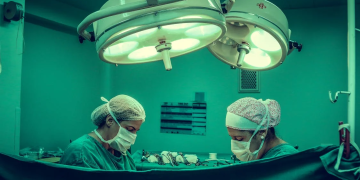Carmen Lucas is a graduate of La Jolla High School, a San Diego native and a Kumayaay Indian who now resides in her father’s 75-year-old cabin on a reservation in Laguna Hills.
She served recently as a Native American monitor during an excavation study at the University of California, San Diego’s Chancellor’s House ” the historic 1950s home built by well-known architect William Lumpkins, which university officials are proposing be demolished.
Lucas, who said her ancestors are likely buried at the site, has been joined by many other cultural, historical and archaeological preservation groups in protesting the project, many of whom were present Thursday, July 12, at a hearing that addressed the draft environmental impact report (EIR).
“I think the Lumpkins House is an exquisite example of architecture here in San Diego,” Lucas said. “We set an example for the world. Why do we want to tear that down?”
The hearing was held by UCSD’s physical planning department to gather additional feedback for the project EIR before the public comment period closes Aug. 3. Close to ten people stated their opposition to tearing down the building and further disturbing the iconic property.
The project was initiated in 2004 when UCSD conducted a renovation investigative study of the house that showed the building required repairs and was not safe to live in. A UC Regents president-appointed working group determined that demolition and reconstruction was the preferred project alternative.
Because the Chancellor’s House has been traditionally used as a public affairs venue, UCSD’s primary goal in reconstructing the buildings on the property is to provide a larger facility to host more guests, according to Catherine Presmyk, UCSD’s assistant director of environmental planning.
“The house meets eligibility for the California Register of cultural and historic resources, and those are not fully mitigated impacts,” Presmyk said of the project.
The EIR also concludes that even with mitigation efforts, the impacts to the archaeological resources cannot be fully eliminated, according to Presmyk.
Many have asserted the public interest does not outweigh the impacts to the property and the house, including Courtney Coyle, an attorney specializing in environmental litigation and natural and cultural resources. Coyle is representing Lucas and the Kumayaay Indians, who believe that the property is a sacred burial ground for their ancestors.
“It’s high time and probably overdue for your upper-level management folks to go to a KCRC [Kumeyaay Cultural Repatriation Committee] meeting,” Coyle said to university officials. “They are very concerned about this. This is a burial ground ” everyone knows this ” and we need to get serious about applying state law here.”
The La Jolla Historical Society, a nonprofit organization whose members were also present at the meeting, recently nominated the property to be placed on a historically protected national register by the state’s Office of Historical Preservation. An Aug. 3 hearing will determine whether the original architecture and archeological findings are eligible to be protected under the register.
“We feel like this is desecrating sacred grounds,” said Don Schmidt, a La Jolla Historical Society member. “Would you like your loved ones dug up? Does anyone in this room want their ancestors dug up? They were the first ones here in La Jolla, and it is appalling that one of the greatest educational facilities in the world would even consider this project.”
The historical society, joined by Coyle and other residents, asked university officials to consider postponing the Aug. 3 comment due date to later in the month to allow the Office of Historical Preservation’s board to make its decision about the national designation.
University officials did not provide a response to the request at Thursday’s meeting.
For information about the UCSD House project, contact UCSD’s Physical Planning Department, (858) 534-6515, or visit www.physicalplanning.ucsd.edu.












Discussion about this post